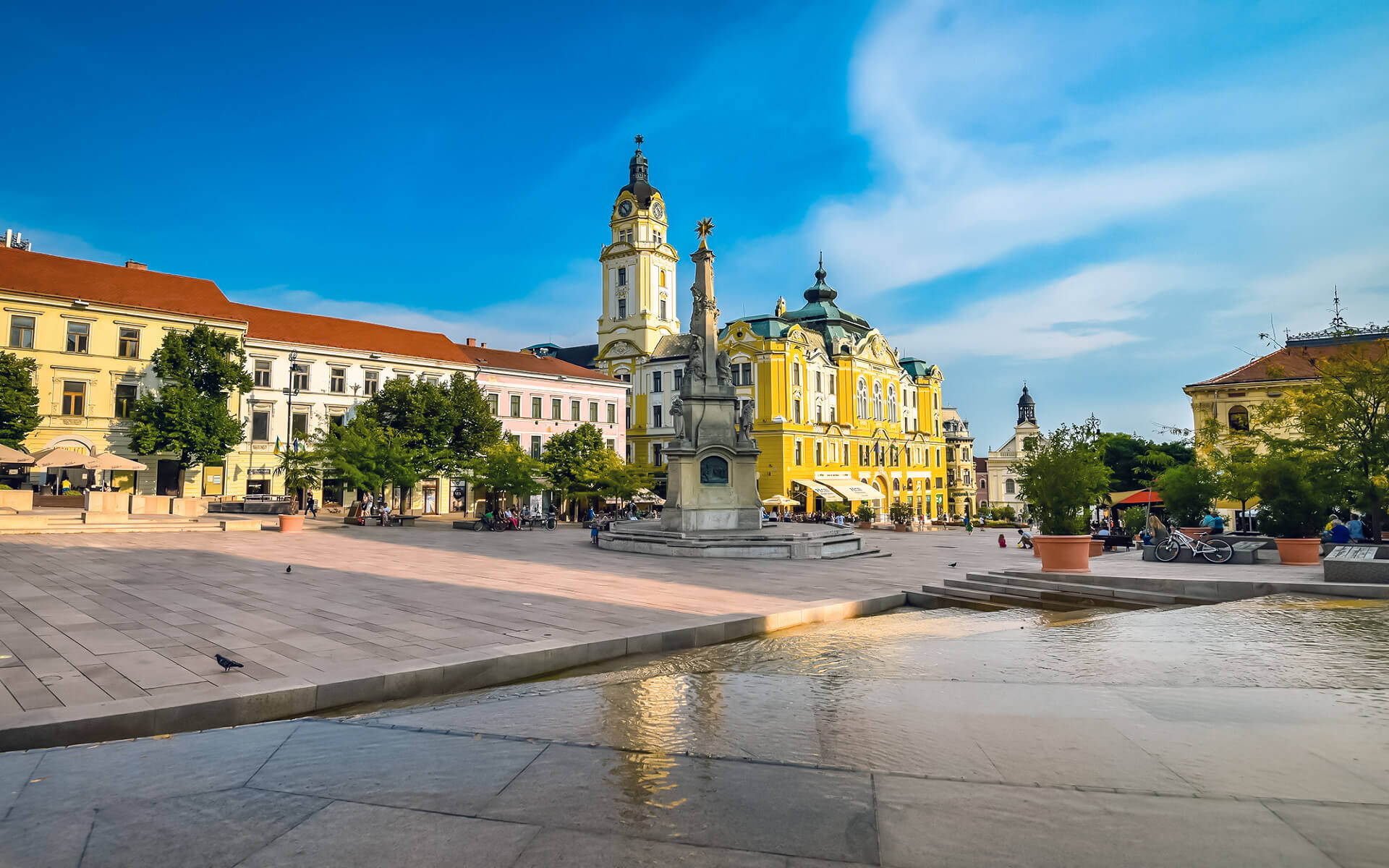Pécs is Hungary’s fifth biggest city, situated on the slopes of the Mecsek mountains in the country’s south-west, close to the border with Croatia. It serves as the administrative and economic hub of Baranya County. Pécs is also the seat of the Pécs Roman Catholic Diocese.
The city of Sopianae was constructed by Romans in the early second century in an area inhabited by Celts and Pannoni tribes. By the fourth century, it had grown to become the capital of Valeria province and an important early Christian settlement. This period is represented by the early Christian necropolis, which was designated a UNESCO World Heritage Site in December 2000.
Steven I established its episcopate in 1009, and Louis I the Great established Hungary’s first university at Pécs in 1367. (The biggest university, with over 34,000 students, is still located in Pécs.) Bishop Janus Pannonius, a brilliant humanist poet, transformed Pécs into one of the country’s culture and artistic centers. Pécs has a significant history from the 150-year-long Ottoman rule, such as the Pasha Qasim the Victorious Mosque on Széchenyi Square.
Pécs has always been a heterogeneous city with numerous cultural layers coated with distinct ideals from its two thousand year history. Hungarians, Croats, and Swabians coexist peacefully despite economic and cultural polarization. In 1998, Pécs was awarded the UNESCO Prize Cities for Peace for preserving minorities’ traditions, as well as for its tolerant and helpful attitude toward refugees fleeing the Balkan Wars. In 2007, Pécs was ranked third, while in 2008, it was ranked second in the category of cities with 75,000 to 200,000 people (The LivCom Awards).
Pécs was chosen as the European Capital of Culture in 2010, sharing the honor with Essen and Istanbul. “The Borderless City” is the city’s slogan. After acquiring the title, a period of considerable renovation began in the city. Renewed public spaces, streets, squares, and neighborhoods were planned, as well as new cultural centers, a music theater, a new library and center, and a cultural district.


